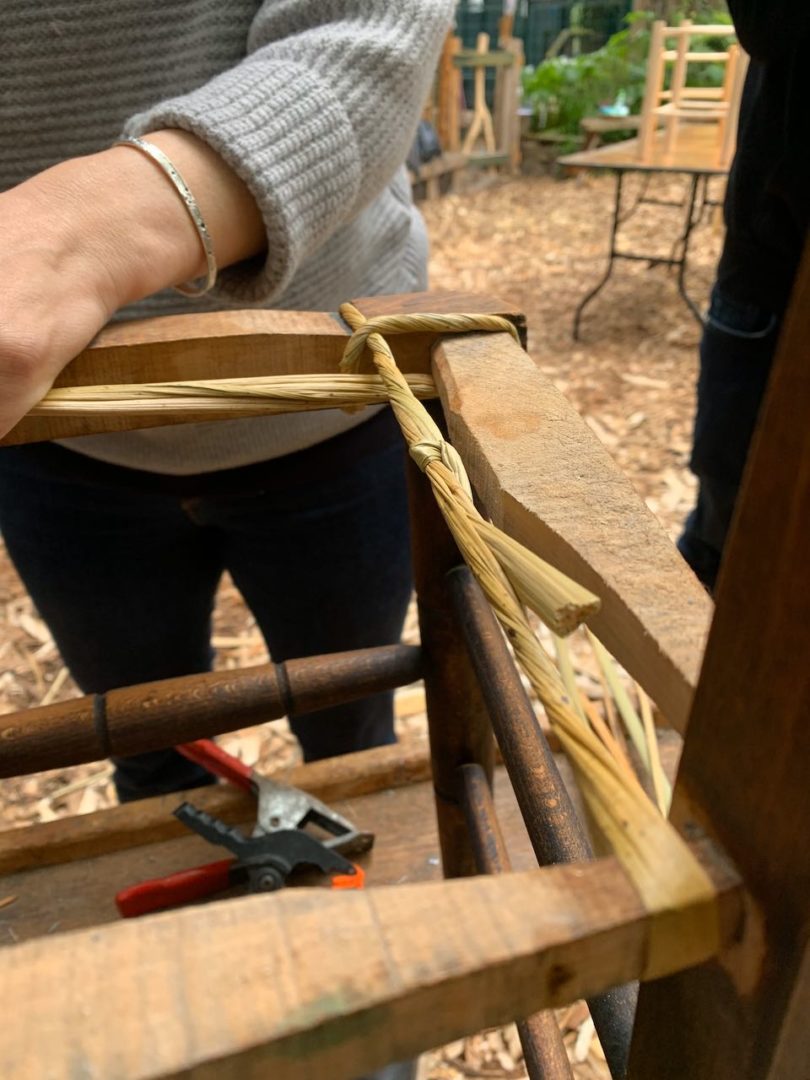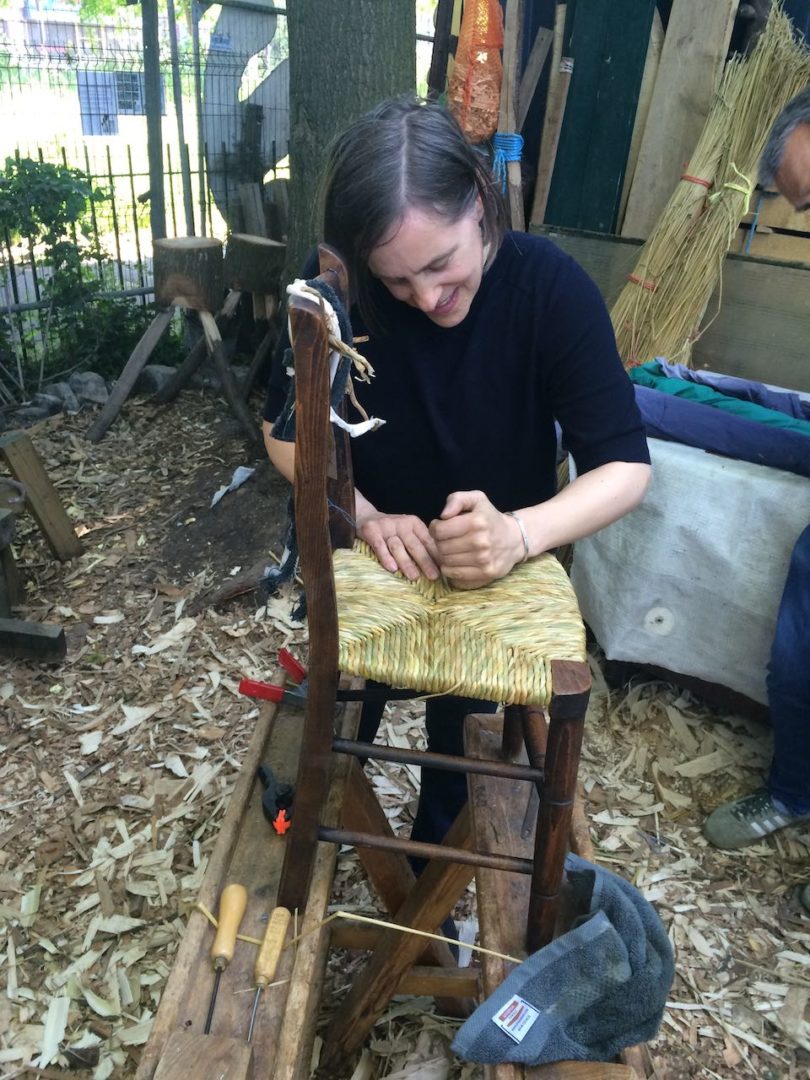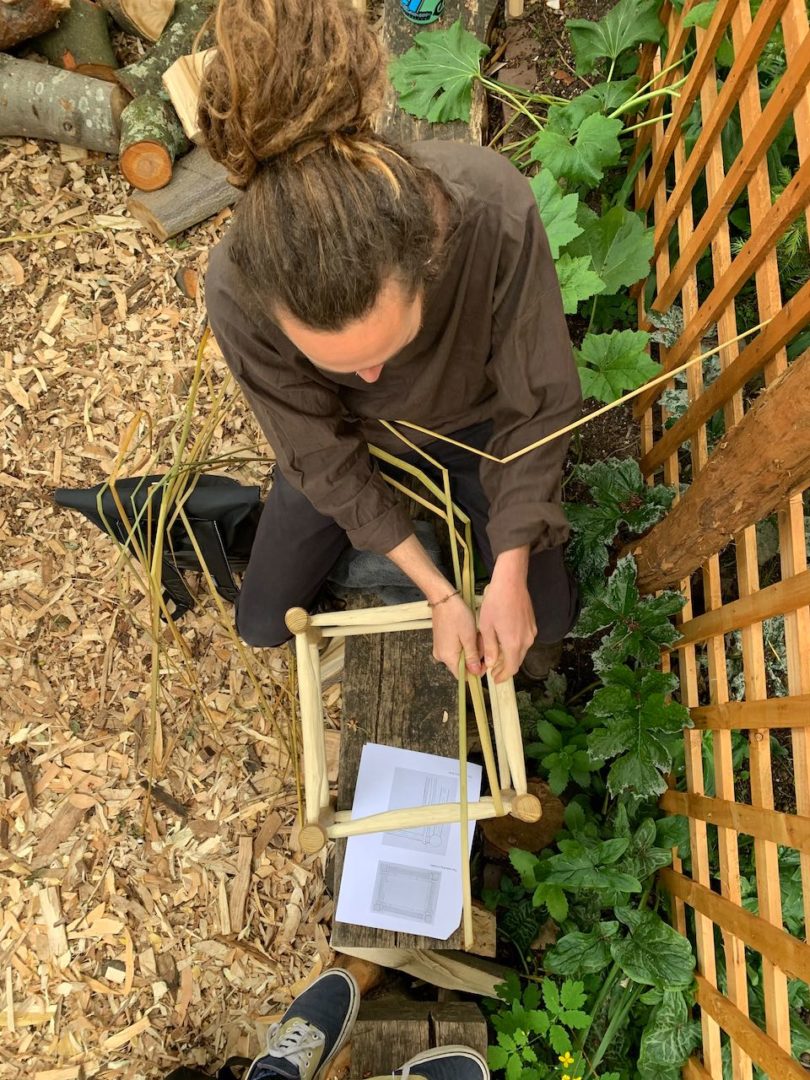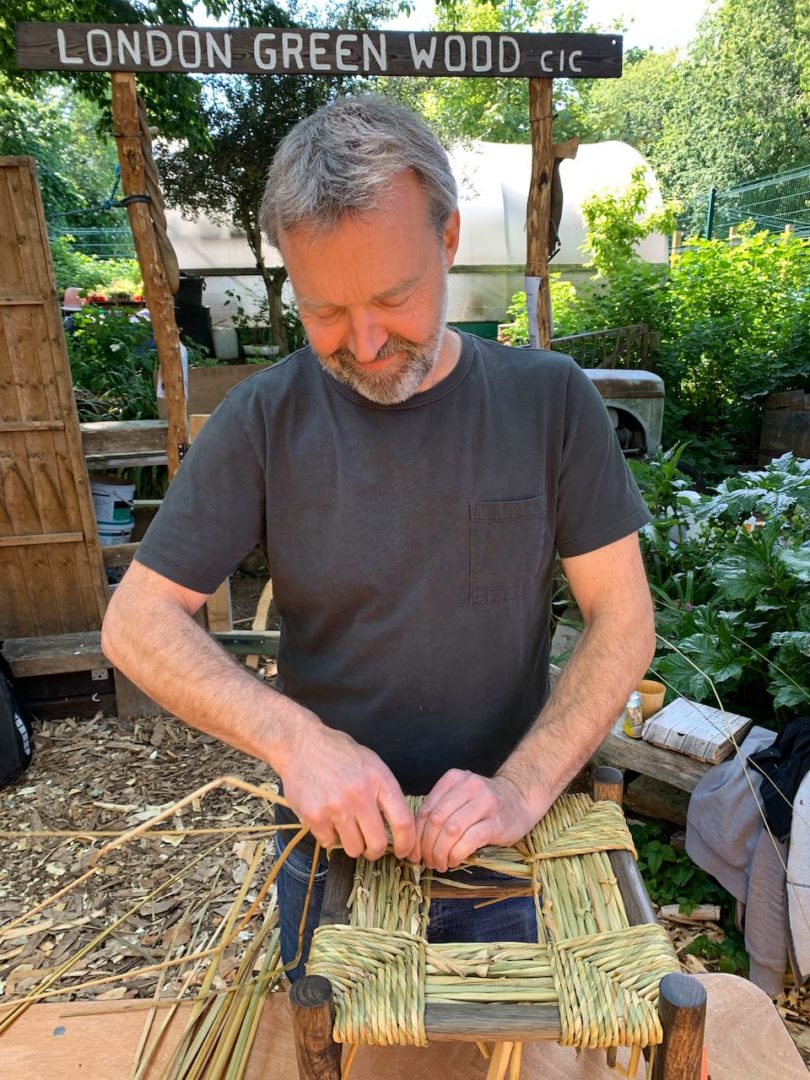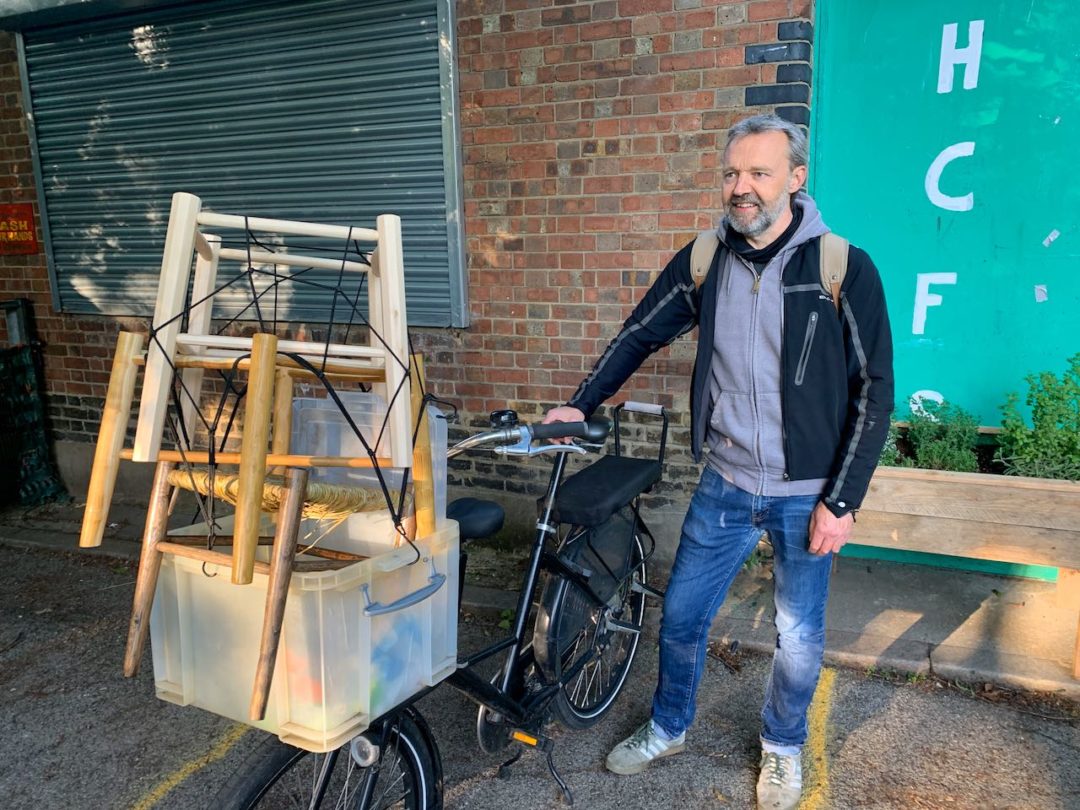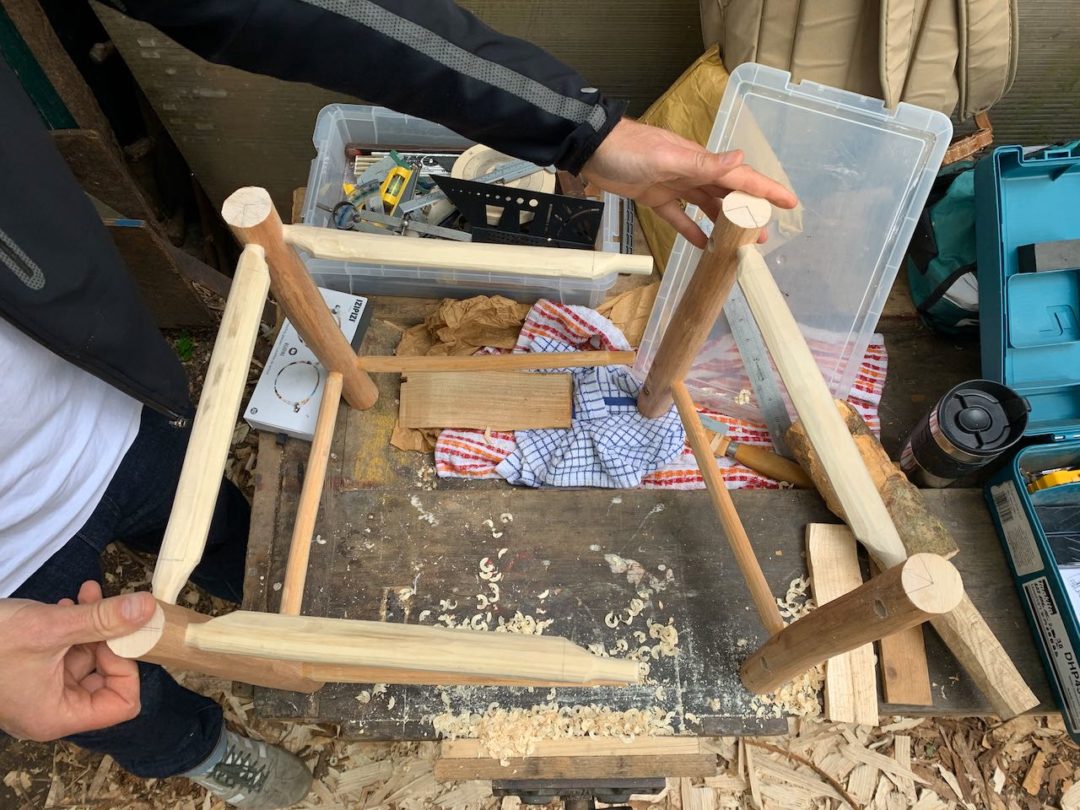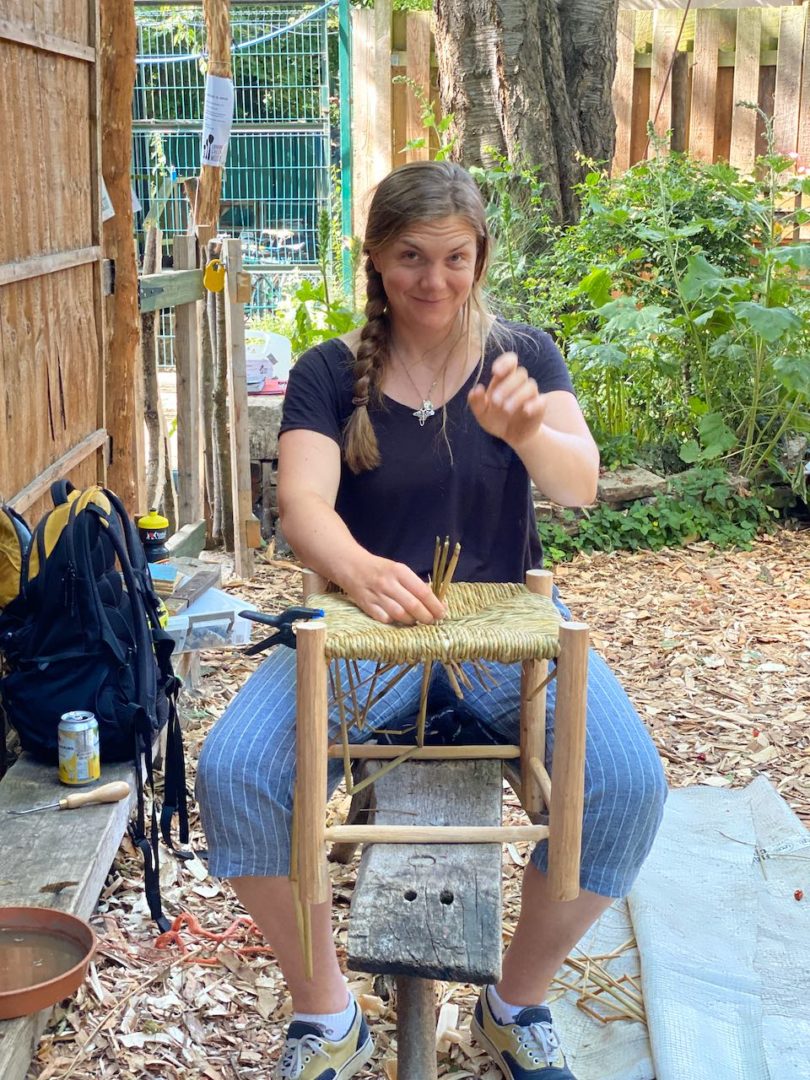A coop members “new craft skill” course
Text: Esther Robinson
Photos: Esther Robinson, Slow Maker, Spencer Martin
Back in the depths of lockdown, LGW member Spencer Martin floated the idea of a rush seating workshop led by one of the country’s best chair caners. Naturally, uptake was huge but the offer came with a caveat – you have to make a stool first!
This would be the first time most of us had ever made greenwood furniture, let alone a post-and-rung stool, so it was a very good thing that we had three months between us and the course.
We based our design around that in Mike Abbot’s fantastic book “Going with the Grain”, and all got to business making all the parts needed under Spencer’s watchful eye and sage advice.
The basic idea of this stool is that it is made entirely of greenwood – that is no glue, nails or screws – and reliant on the natural shrinkage of the wood to hold the seat rails, rungs and posts together.
We had a glutton of wood to choose from as members had recently salvaged tonnes of freshly felled trees from our previous site at Abney Cemetery, resulting in a beautiful array of colourful stools! Some purebred furniture, some fantastic mongrels from different species including lime, ash, cherry, oak, beech and tulip. Whatever you choose, it helps to find wood that is straight and not too knotty..!
After three months (or a frantic couple of weeks for some!) of slow-making joy, LGW members descended on Hackney City Farm carrying – some via inventive entrapment techniques on bike racks and backpacks – their lovingly handcrafted stool.
Enter our tutor for the day: Rachael South, a third-generation chair caner with the craft in her blood. She was taught by her father who in turn was taught by his father, Michael South, who was a West London chair caner in the 1900s. You can read more about Rachael’s background and family history here: https://spitalfieldslife.com/2021/05/07/rachael-south-chair-caner/
Members arrive to find Rachael wetting bolts of scirpus lacustris schoeneplectus, or freshwater bulrush, that she harvests herself from a secret location in Somerset every summer, using traditional rush knives that look not unlike scythes.
The rush we use has been dried and stored all year in bolts tied up with baler twine. In order for it to be twisted and manipulated, Rachael sprinkles it with water and wraps it in old bedsheets to render it supple enough to be worked. Then each piece must be wiped with a wet flannel to remove any river muck and flatten it, which happens with a satisfying crack as you break the inner structure of the rush.
She shows us how to attach the first piece of rush, twist and wrap it round the first corner and from there we are off! It’s a deceptively simple process, repetitive yet takes skill and concentration to make a neat and even pattern.
We learnt the ‘arrowhead’ rush pattern, as it is easy to learn. Traditional configurations tend to be fairly simple so as to be completed in good time on the street, but Rachael also designs her own impressively complicated looking patterns. Very few tools are needed – just your flannel, a spring clamp to keep the tension, a rush threading tool, a bodkin or awl and a “wooden dolly” that looks like a darning mushroom to smooth the rush once finished.
Rachael clearly enjoys her trade. She recounts tales of her grandfather travelling from Ladbroke Grove to Kensington in his suit, toolbox in hand, repairing chairs all day on the street and revels in the history. She explains the tradition throughout the day with fondness, with an enduring smile that stays put even when engrossed in her own weaving.
The day passed in a lovely haze of making and chatting accompanied by a symphony of snap, crackle and popping, satisfied sighs and the occasional call out for help! Rachael is a fantastic tutor and was very clear in her instructions and attentive and encouraging. She claims it takes her most of a day to complete a whole chair, and of course it takes us a deceptively long time to do – only a couple of members finished their stool in the day but Rachael kindly lent us the tools and rush to be able to complete in our own time.
As we all left the workshop, the various ways of transporting our beloved stools recommenced and we scattered ourselves across town to either sit on our finished stools, or sit on the floor admiring our work and dreaming of the day we would finish it! Safe to say, all participants have now successfully seated their stools and, I imagine, spend endless hours carving, reading, drinking and thinking on our handmade gems. I do at least!
Huge thanks to Spencer Martin for organising the workshop, and for the endless assistance on the build stage of our stools. And of course to Rachael South for imparting her knowledge and displaying her skills with immense modesty and good humour. We really learnt a huge amount and it reinstilled that awareness of how much you can achieve with just your hands and very few tools and materials. Her passion and evident joy in what she does has left a great impression on us and I’m sure we will see more furniture built at the workshop as a result.
For more information on Rachael’s work: http://rachaelsouth.com/
Or on Instagram: @rachael_south
Greenwood stool & Rush seating steps by steps with Esther:
Text: Esther Robinson
Photos: Esther Robinson, Slow Maker, Spencer Martin







